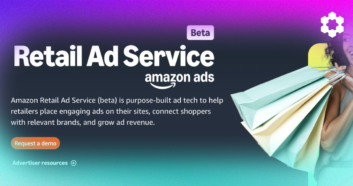As the world’s largest ecommerce marketplace, Amazon is home to an enormous number of shoppers — more than 98 million US monthly users and more than 310 million worldwide.
Who serves these millions of customers? Amazon’s nearly 9.5 million sellers.
But while every third-party Amazon seller starts out in Amazon Seller Central, only a few get invited to Amazon Vendor Central.
If you receive Amazon’s special invite to Vendor Central, the question is:
Should you join?
To make the right decision for your business, it’s vital to know the implications of joining Amazon Seller Central and Vendor Central. Here’s what you need to know about the differences between the two and how each can impact your business.
What are Amazon Seller Central and Amazon Vendor Central?
Amazon Seller Central is a marketplace interface that brands and third-party merchants use to manage all aspects of their Amazon business. In fact, it’s the single-most used dashboard that Amazon offers.
Anyone who uses Seller Central is considered a third-party or marketplace seller. These sellers offer products directly to Amazon customers, interact with buyers, and manage product listings and business decisions autonomously.
Alternatively, Amazon Vendor Central is a platform that enables Amazon itself to sell products on behalf of brands. Amazon purchases the product from the brand, then sells the product directly to customers.
Vendor Central brands can:
- Use a marketplace interface designed specifically for manufacturers
- Become first-party – not third-party – vendors
- Sell in bulk to Amazon, which could increase profits
Amazon Seller vs. Amazon Vendor: What’s the Real Difference?
The biggest difference between Seller and Vendor Central is who’s doing the selling: you or Amazon.
To be clear, you can be successful by selling both ways. And you should decide which is right for you by assessing your business’ needs, your strengths, and even your personality.
Here’s what we mean:
Being an Amazon seller allows you to gain hands-on involvement in the day-to-day management of your Amazon business. With power comes responsibility, though, and this is no exception. Sellers need to take on everything from product marketing to customer service by themselves.
Consider customer order fulfillment, as an example. Sellers can choose one of two ways to fulfill orders:
- Fulfilled by Merchant (FBM), in which you’re responsible for shipping, navigating customer service issues, and managing returns.
- Fulfilled by Amazon (FBA), in which you pay a fee for Amazon to handle all of the above.
As a vendor, Amazon handles many of those aspects for you. Vendors, on the other hand, sell products directly to Amazon, and Amazon takes it from there.
Understanding the advantages and disadvantages to both selling approaches is key to determining which is right for you.
The Pros of Amazon Seller Central
The most convenient part of using Seller Central?
There’s no invitation required to join. Using Seller Central allows you to be in control of your own pricing, fulfillment methods, and product marketing. As a third-party seller, you own all of your business processes and have the freedom to build your brand the way you want.
Ultimately, the fees involved with using Seller Central are manageable, and sellers can set product prices higher or budget marketing spend to reduce overhead costs.
The Cons of Amazon Seller Central
As an Amazon seller, you have to wear many hats to keep sales rolling in.
You need to stay on top of stocking inventory, improving your marketing strategy, analyzing data, and tracking your investments and profits.
There’s a ton to consider, including juggling fulfillment costs, navigating limited advertising options, and overcoming high levels of competition. Plus, sellers have to work hard to build the consumer trust that Amazon’s brand has built over time.
The Pros of Amazon Vendor Central
Being an Amazon vendor often means handling fewer headaches. Amazon deals with the entire fulfillment process, drawing on decades of developed consumer confidence.
You will also discover more advertising opportunities in Vendor Central compared to Seller Central. Vendors can access more robust tools within Amazon Marketing Services (AMS) to create and launch keyword-rich content and campaigns.
Also, there’s no denying that Amazon will always favor its own first-party products over third-party sellers, so a vendor’s product is more likely to win the buy box than a seller’s.
The Cons of Amazon Vendor Central
Amazon Vendor Central comes with knowledge gaps, too. Small or start-up businesses might have to learn new processes without having access to much guidance.
Vendor Central is also an invitation-only space. Amazon invites sellers who have been successful in selling directly to consumers. This means that getting on the inside can be a big deal for sellers, but it also means that it’s not beneficial for new products that lack a sales track record.
While Amazon takes on much of the order fulfillment burden, being tied to the marketplace behemoth can have its drawbacks. Vendor Central rarely accepts seller-issued product price increases, for example, and they typically use previous sales volume data to order new inventory. Vendor Central programs exist to help you navigate these challenges and promote seasonal or new product sales, but they’re often unable to solve the issue altogether, leaving you stuck with outdated sales efforts and data.
You’re also vulnerable to Amazon chargebacks, shortages, and other various vendor fees. And, you aren’t able to make pricing decisions to offset these deductions in your cost. Additionally, because Amazon fully controls pricing, you run the risk of them undervaluing your product.
In fact, a product’s success can quickly feel like it’s out of your hands. You lose decision-making power regarding how you prioritize — and promote — your product lineup. As a vendor, Amazon is your customer, and they come with high expectations and rigid guidelines.
Which Is Right for Your Amazon Business?
Overall, becoming a vendor can be a great way for top sellers to boost sales, and sellers should carefully consider their invitation when it comes.
The most important thing? Ensuring you have a game plan in place for transitioning to a vendor.
The first step of establishing that plan is understanding the shifts you’ll need to make in your business to move from seller to vendor. Continue to familiarize yourself with the requirements and guidelines for both Amazon seller account types, and future-proof your content wherever possible to help yourself maintain as much control as possible when you become a vendor.
Taking the right steps now can set you up for success when that invitation hits your inbox.
Want to learn more about how you can declutter your FBA business and simplify your success? Check out the C6 tool suite to see how you can manage your inventory, campaigns, and profits with the premier ecosystem for the professional seller.




